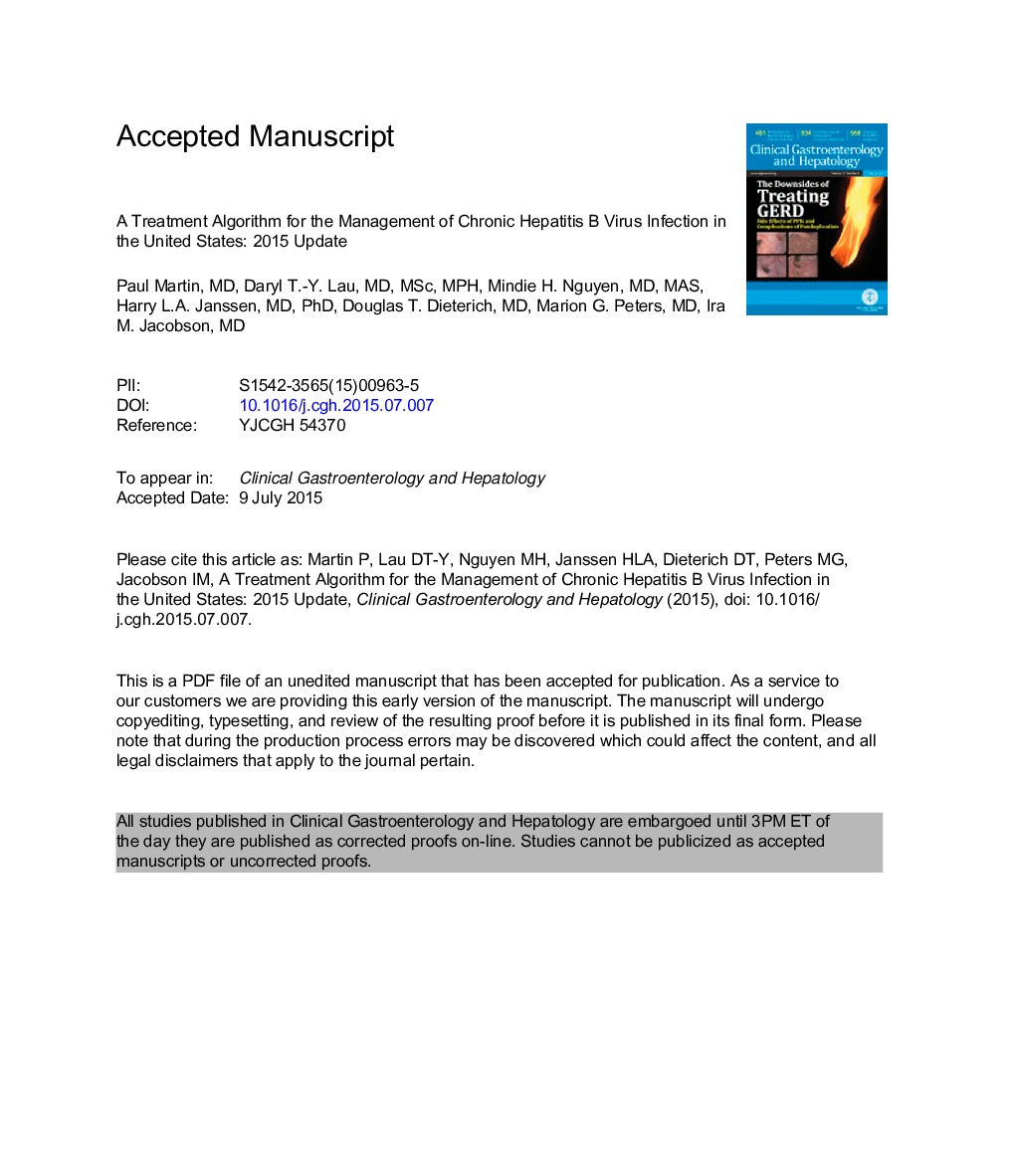| Article ID | Journal | Published Year | Pages | File Type |
|---|---|---|---|---|
| 3281609 | Clinical Gastroenterology and Hepatology | 2015 | 105 Pages |
Abstract
Chronic hepatitis B (CHB) continues to be an important public health problem worldwide, including in the United States. An algorithm for managing CHB was developed by a panel of United States hepatologists in 2004 and subsequently updated in 2006 and 2008. Since 2008, additional data on long-term safety and efficacy of licensed therapies have become available and have better defined therapeutic options for CHB. The evidence indicates that potent antiviral therapy can lead to regression of extensive fibrosis or even cirrhosis, thus potentially altering the natural history of CHB. In addition, appropriate choice of antiviral agent can minimize the risk of resistance. This updated algorithm for managing CHB is based primarily on evidence from the scientific literature. Where data were lacking, the panel relied on clinical experience and consensus expert opinion. The primary aim of antiviral therapy for CHB is durable suppression of serum hepatitis B virus (HBV) DNA to low or undetectable levels. CHB patients who have HBV DNA >2000 IU/mL, elevated alanine aminotransferase level, and any degree of fibrosis should receive antiviral therapy regardless of their hepatitis B e antigen status. CHB patients with HBV DNA >2000 IU/mL and elevated alanine aminotransferase level but no evidence of fibrosis may also be considered for antiviral therapy. Approved antiviral therapies for CHB are interferon alfa-2b, peginterferon alfa-2a, lamivudine, adefovir, entecavir, telbivudine, and tenofovir, although the preferred first-line treatment choices are peginterferon alfa-2a, entecavir, and tenofovir. In determining choice of therapy, considerations include efficacy, safety, rate of resistance, method of administration, duration, and cost.
Keywords
cccDNAHBeAgIL28BALTHBsAgCHBORFHBIGPeginterferon alfa-2aULNcovalently closed circular DNAHCCASTAspartate aminotransferaseAlanine aminotransferasealpha-fetoproteinantibody to hepatitis B core antigenantibody to hepatitis B e antigenantibody to hepatitis B surface antigenHepatitis B surface antigennegative predictive valueMRIEntecavirimmunoglobulin Interleukin 28BAFPMagnetic resonance imagingTenofovirUpper limit of normalAntiviral therapyanti-HBcAnti-HBeAnti-HBsREVEALopen reading frameNPV یا negative predictive valueResistancehazard ratioHepatitis B e antigenhepatitis B immunoglobulinchronic hepatitis BHBVHepatitis Bpolymerase chain reactionPCRhuman immunodeficiency virusHIVhepatitis B virusHepatocellular carcinomaGuidelines
Related Topics
Health Sciences
Medicine and Dentistry
Gastroenterology
Authors
Paul Martin, Daryl T.-Y. Lau, Mindie H. Nguyen, Harry L.A. Janssen, Douglas T. Dieterich, Marion G. Peters, Ira M. Jacobson,
